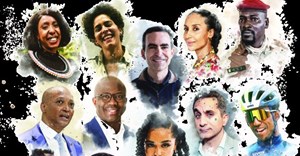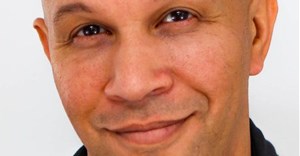Trending
Elections 2024
Eye-tracking can help diagnose concussion, but it's under-utilised

It’s defined in the 2017 Berlin Consensus Statement on Concussion in Sport as a “traumatic brain injury induced by biomechanical forces”. It typically manifests in the rapid onset of short-term impairment of neurological function. Common symptoms include headaches, nausea, dizziness, confusion or feeling as if you’re in a fog.
A concussion may lead to neuropathological changes – at the level of the nervous system tissue. But it’s not a structural injury. It doesn’t change the brain in a way that can be seen with the naked eye or on traditional neuro-imaging screens. This is part of the reason that it’s not always diagnosed, and why there is still no universal tool to detect concussion. Clinicians have to rely largely on their experience and on the symptoms that injured athletes report.
The problem with self-reporting, though, is that athletes are often not too keen to be removed from the field, so they sometimes understate their symptoms. Younger athletes also struggle to properly verbalise what they feel and don’t necessarily understand the implications of the injury.
Researchers worldwide are working on solutions and methods that will help clinicians to diagnose concussion. One such method could be using eye-tracking. This is a technology for recording eye movements with a small externally mounted camera and then analysing, for example, how fast the eyes move or how accurately they can follow a certain target.
Research has already established that eye-tracking can be used successfully in diagnosing and classifying brain disorders such as schizophrenia or autism.
We believe that eye-tracking also shows promise in concussion assessment. According to research, up to 80% of concussed athletes show some eye movement dysfunction.
But do clinicians know this? We conducted a survey among sports medicine clinicians who deal with concussions to find out. A total of 171 clinicians from 32 countries shared whether they were aware that concussed athletes may have impaired eye movements, and whether they believed that eye-tracking technology has a potential to assist them in assessing concussion.
Clinicians’ feedback
Our survey revealed a few interesting facts.
On whether they knew that concussed athletes may have impaired eye movements, we found that the respondents on average saw eye movement impairments in only 30% of their concussion patients. That’s lower than what we expected.
The reason for this may be that, even though measuring the eye movements without the equipment is possible – for example, asking a patient to look side to side – it is not as accurate. On top of that, 20% of our respondents admitted that they were not checking for any eye movement deficits at all, which indicates they probably were not aware that concussion may lead to abnormal eye-tracking.
And then on the potential of eye-tracking technology to help them assess concussions, most clinicians did see benefits in using eye-tracking. These benefits include objectivity, ease of use (both for the clinician and the patient), replicability of the tests, and the fact that the results can be quantified.
But despite this, many seemed reluctant to implement this technology in their practice. Only 49% of the survey respondents explicitly said that utilising eye-tracking technology for concussion diagnostics was advisable.
There are several understandable reasons for this reluctance: they may not be familiar with this still rather novel technology at all; may lack access to the equipment; or may lack training.
Using technology
The survey happened against the backdrop of several recent developments in eye-tracking for concussion assessment.
First, there have been significant technological advancements in recent years. In 2018 two eye-tracking devices, RightEye and Oculogica’s EyeBOX, designed specifically for concussion assessment were approved by the US Food and Drug Administration. A third device, EYE-SYNC, is currently undergoing a clinical trial in the US.
The prices of the eye-tracking equipment have also dropped tremendously. For instance, EYE-SYNC cost US $6000 in 2018, but is expected to decline to between $1000 and 2000 this year. RightEye is targeting the cost of the tests at $10-$20 per patient.
It’s important to point out that eye-tracking technology isn’t perfect and certainly shouldn’t be the only approach to diagnosing concussion. These developments nevertheless suggest that eye-tracking technology has a valuable role to play in clinical settings.
The way forward
We believe that with ongoing education of clinicians on current developments in the field, and particularly with reference to continuing technological advances, eye-tracking technology could become more common in clinical settings.
Our results suggest that the level of exposure to novel diagnostic tools and clinicians’ acceptance possibly go hand in hand. That’s why we strongly recommend creating training opportunities for concussion evaluation, including the use of potential innovative technology. We also suggest facilitating close interaction between researchers and clinicians regarding the use of latest tools for concussion assessment such as eye-tracking.
All of this could lead to the technology being adopted at a higher rate. This in turn might enable the evaluation of currently somewhat neglected eye movement deficits caused by concussion – and ultimately more accurate evaluation of concussion resolution over days to weeks.
Dr Karen Welman, Stellenbosch University; Professor Wayne Derman, Stellenbosch University & International Olympic Committee (IOC) Research Centre and Professor Jon Patricios, University of the Witwatersrand, co-authored this article.
This article is republished from The Conversation under a Creative Commons license. Read the original article.![]()
Source: The Conversation Africa

The Conversation Africa is an independent source of news and views from the academic and research community. Its aim is to promote better understanding of current affairs and complex issues, and allow for a better quality of public discourse and conversation.
Go to: https://theconversation.com/africa














